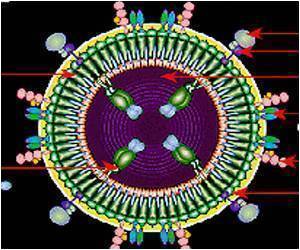- Human immunodeficiency virus (HIV) infections which cause AIDS are difficult to cure.
- The HIV is capable of lying dormant in the immune cells and are often undetectable.
- Scientists have found a new test TZA that could detect the hidden HIV and provide potential treatment.
The test was found to be faster, less labor-intensive and less expensive when compared to the current “gold standard” test.
The New Test
The study findings revealed that the amount of the virus that is dormant in people who may appear to be nearly cured of HIV could be about 70-fold larger than previous estimates.
Phalguni Gupta, Ph.D., professor and vice chair of Pitt Public Health’s Department of Infectious Diseases and Microbiology, said, "Globally there are substantial efforts to cure people of HIV by finding ways to eradicate this latent reservoir of virus that stubbornly persists in patients, despite our best therapies."
"But those efforts aren't going to progress if we don't have tests that are sensitive and practical enough to tell doctors if someone is truly cured."
HIV often spreads by a type of white blood cells called CD4+ T cells. This could play a major role in protecting the body from infection. Antiretroviral therapies could help in the treatment of HIV to as little as one infectious virus per million CD4+ T cells.
The majority of the HIV DNA integrated into the cells could be defective and wouldn’t cause any infections. However, when the therapy starts working, it might become difficult to detect if the HIV DNA could actually create more virus and cause the person to relapse if the therapy is stopped.
Until now, the best test that has been available for treatment is called as a “quantitative viral outgrowth assay” or Q-VOA. The test is performed on highly purified resting CD4+ T cells that could reverse latency and induce HIV replication.
Limitations of the Test:
- Provides only a minimal estimate of the size of latent HIV reservoir
- May require a large volume of blood
- Labor-intensive
- Time consuming
- Expensive
The research team developed a new test called TZA. This could work by detecting a gene that could turn on only when there is replication of HIV. And also occurs by flagging the virus for technicians to measure.
Advantages:
- Produces results in one week when compared to Q-VOA test that takes more than two weeks.
- Requires smaller volume of blood
- Less labor-intensive
"Because these tests have different ways to measure HIV that is capable of replicating, it is likely beneficial to have both available as scientists strive towards a cure."
Due to its low cell requirement, the TZA could also be useful for quantifying the replication-competent HIV-1 in pediatric patients and in the lymph nodes and tissues where the HIV remain.
References
- Anwesha Sanyal, Robbie B Mailliard, Charles R Rinaldo, Deena Ratner, Ming Ding, Yue Chen, Jennifer M Zerbato, Nicholas S Giacobbi, Narasimhan J Venkatachari, Bruce K Patterson, Amanda Chargin, Nicolas Sluis-Cremer, Phalguni Gupta. Novel assay reveals a large, inducible, replication-competent HIV-1 reservoir in resting CD4 T cells. Nature Medicine, 2017; DOI: 10.1038/nm.4347
- Quantitative Viral Outgrowth Assay (Q-VOA) - (http://persaudlab.jhmi.edu/laboratory-assays/quantitative-viral-outgrowth-assay-q-voa)
Source-Medindia










